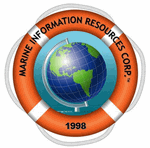Event Title
Session
2
Start Date
17-10-2019 9:30 AM
End Date
17-10-2019 10:00 AM
Description
Real-time observations are critical to understand, predict and estimate the impact of extreme weather events such as extratropical hurricanes and storms. Remote sensing, moored wave buoys and advances in predictive models have greatly advanced understanding and predictive capability of extreme ocean weather. However, due to cost and complexity of traditional moored buoys, in-situ networks are typically sparse and often close to shore and not well suited to drive predictive models over meaningful geophysical scales. Here we will discuss ongoing efforts to extend the capability of the Sofar Spotter to measure marine boundary layer dynamics. With the advancement to more portable metocean buoys such as Spotter, free-drifting strategies can be deployed, including fast-moving vessels and airplanes. This opens up opportunities for rapid deployment to improve predictive capabilities of extreme weather events and provide continuous data for validation of theoretical models.
slideshow presentation
Included in
Innovations in Metocean Sensors
Real-time observations are critical to understand, predict and estimate the impact of extreme weather events such as extratropical hurricanes and storms. Remote sensing, moored wave buoys and advances in predictive models have greatly advanced understanding and predictive capability of extreme ocean weather. However, due to cost and complexity of traditional moored buoys, in-situ networks are typically sparse and often close to shore and not well suited to drive predictive models over meaningful geophysical scales. Here we will discuss ongoing efforts to extend the capability of the Sofar Spotter to measure marine boundary layer dynamics. With the advancement to more portable metocean buoys such as Spotter, free-drifting strategies can be deployed, including fast-moving vessels and airplanes. This opens up opportunities for rapid deployment to improve predictive capabilities of extreme weather events and provide continuous data for validation of theoretical models.




